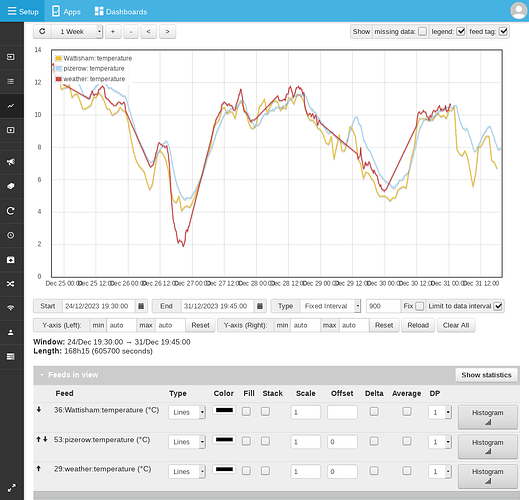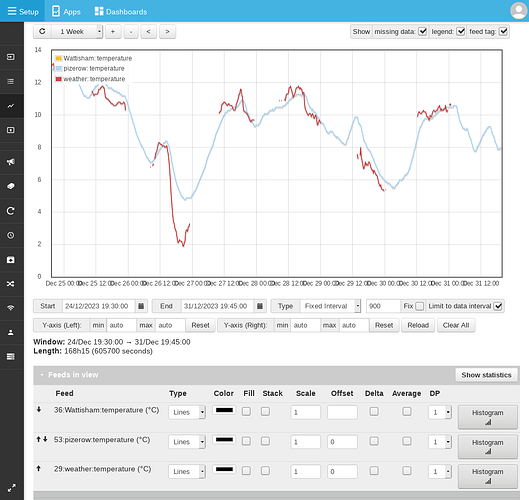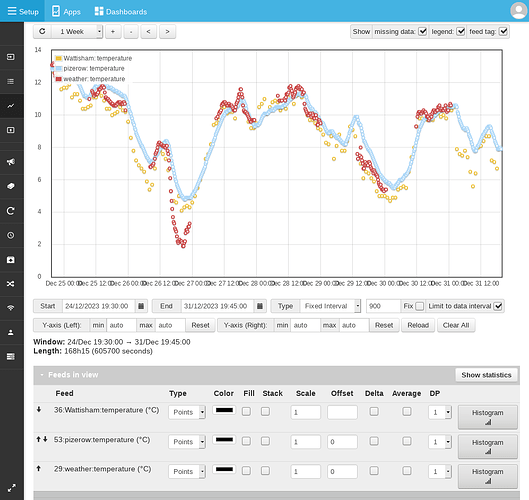Here’s another oddity of graph behaviour. Lets start with a graph of temperatures:
It shows three ‘flavours’ of the external temperature where I live. Wattisham is the nearest met office station; weather is scraped from a neighbour’s online weather station; and pizerow is my own external monitor. All three feeds are PHPTIMESERIES. The weather feed goes down for several hours quite often, you may be able to make out straight line sections in the red graph.
So here’s a version showing missing data:
You can clearly see the gaps in the red line where the feed failed. But even more noticeable, and worrying, is that the yellow line has disappeared altogether! Bug say I!
To see what’s going on, here’s the same thing but shown as points:
Now it’s a bit clearer. pizerow supplies data every minute. weather supplies data every 15 minutes. And Wattisham supplies data every hour.
Whatever algorithm the graph is using to decide whether data is missing is clearly broken. It’s deciding data is missing just because the reporting frequency is lower, not because any data is missing!
In fact since they’re all PHPTIMESERIES one could argue that there can be no such thing as missing data, although ‘weather’ provides an interesting test case.




